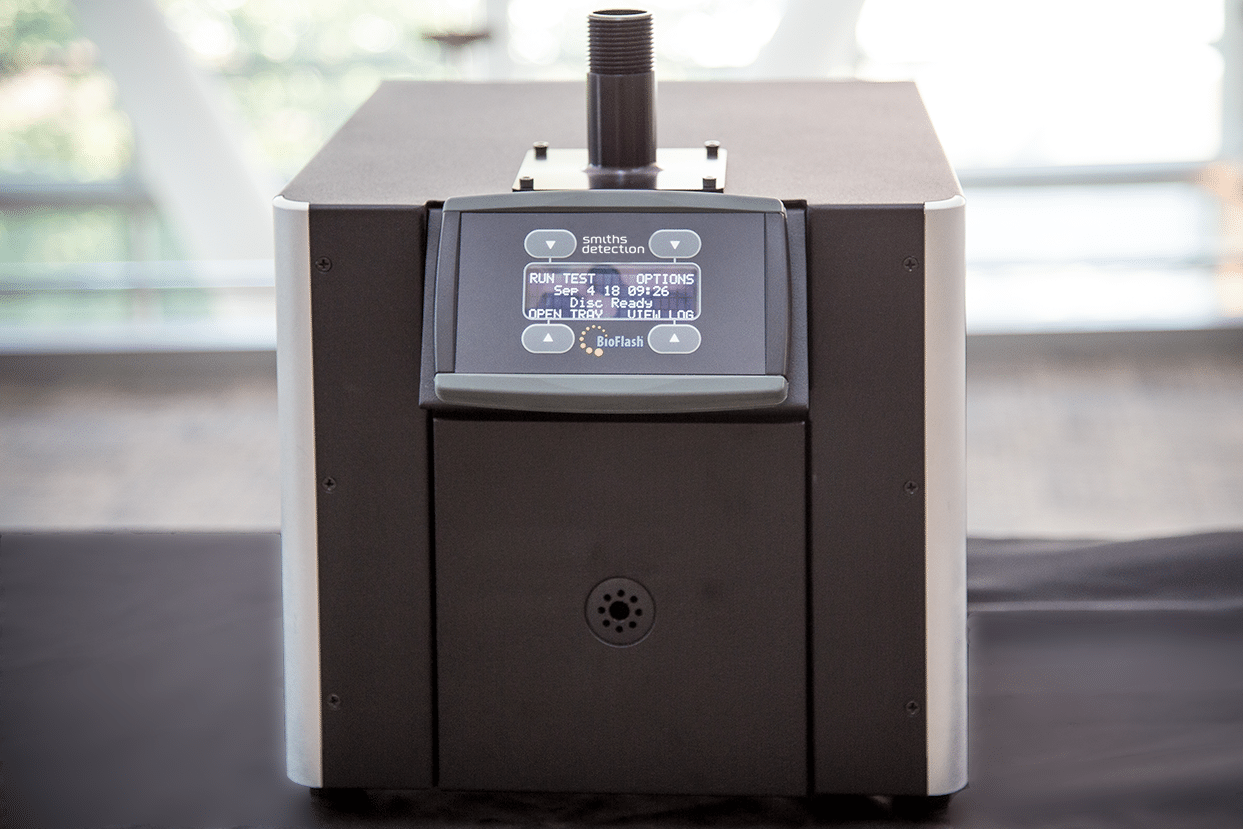
In tests conducted by the U.S. Army Medical Research Institute of Infectious Diseases (USAMRIID), a new screening technology from Smiths Detection broke new ground in efforts to find and contain COVID-19: the capability to detect the virus SARS-CoV-2 in the air.
The BioFlesh Biological Identifier is a cell-based biosensor powered device paired with aerosol-collection techniques. Through their union, it’s capable of rapidly, specifically identifying biological threats such as viruses, toxins, and bacteria.
“We are working incredibly hard to provide a tool that will support the ongoing fight against the coronavirus,” Roland Carter, president of Smiths Detection, said. “BioFlash is an effective and trusted environmental monitoring tool. These test results provide valuable data in understanding the spread of COVID-19 and help protect people in indoor environments such as hospitals, schools, and commercial buildings.”
Tests were conducted on live SARS-CoV-2 in a Biosafety Level 3 containment area at Fort Detrick, Md. Therein, BioFlash’s biosensor proved capable of quickly detecting and identifying low levels of the virus in the air.
According to USAMRIID, BioFlash could detect down to around 6,000 airborne infectious particles from the SARS-CoV-2 virus, at least within a controlled environment. A sneeze from an infected person could spread as many as 1 million particles. Specificity was also put to the test, and BioFlash proved that its sensors had no cross-reactivity with influenza or Middle East Respiratory Syndrome (MERS).
Additional testing and research are already underway at various U.S. universities, focused on gathering more data on the detection technology and its ability to guide both public and private organizations in the mitigation and prevention of COVID-19.




